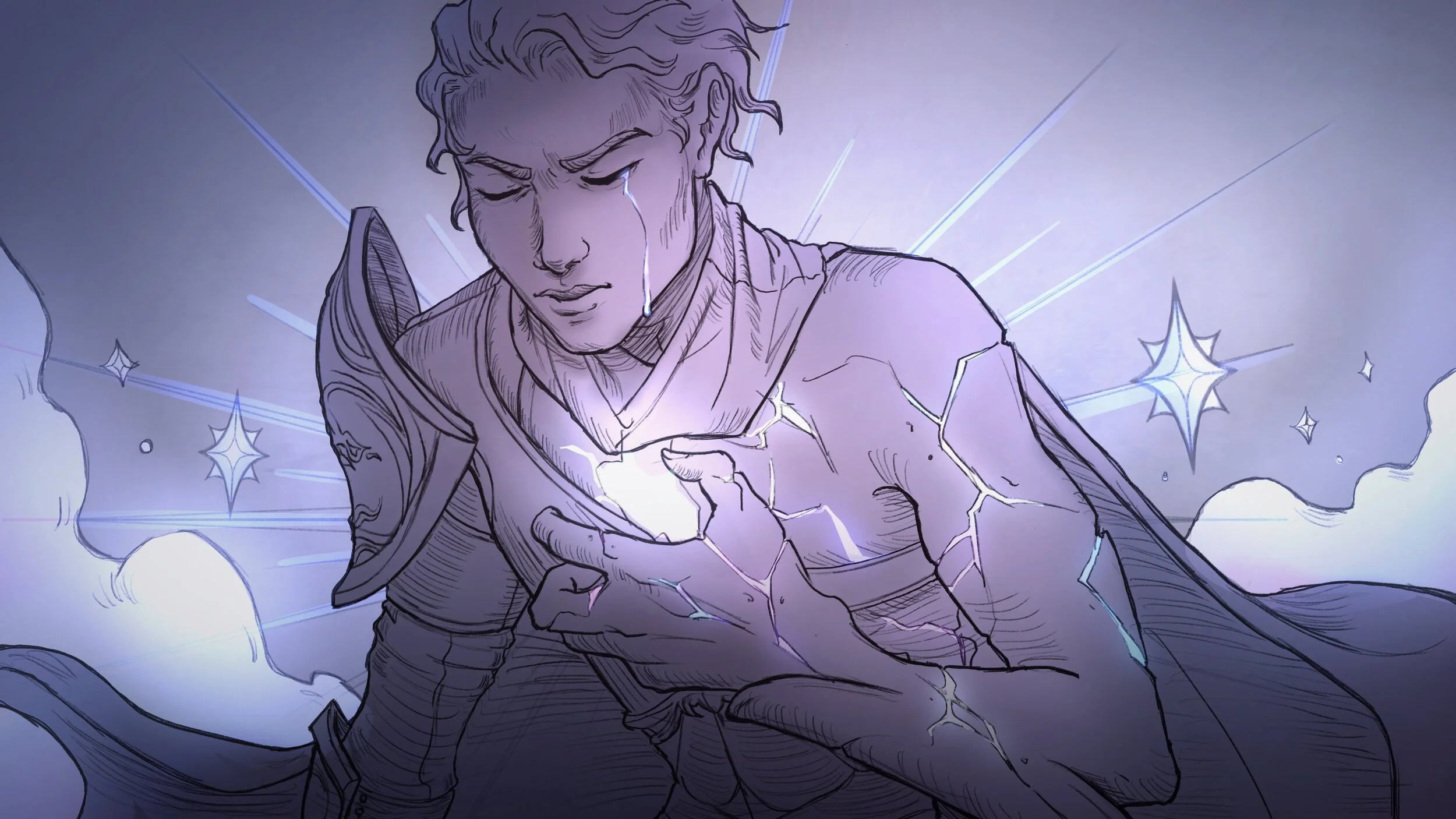
September 2019 - December 2020
Until You Wake
Until You Wake is a fantasy third-person shooter developed in Unity over 3 semesters. The gameplay centers around utilizing a bow to shoot foes while moving through an ancient fantasy cathedral to fight a giant demon. The game features 4 traversable areas, each with a day and night version. There are 3 enemy types and a final boss fight.

My Role(s)
In charge of systems design for preproduction builds. During the first two semesters, I created AI playbooks and character stats in collaboration with our tech team. I also worked on game feel in regards to the character controller through all 3 semesters.
I added in hooks for VFX throughout the project in all areas except for the boss fight. This made it considerably faster for our VFX artist to implement his own VFX and iterate quickly since he didn't need to code anything. It was created so that he could simply attach Unity prefabs to those hooks. I also added placeholder effects to those hooks as well, so that it was obvious which parts still needed work.
I worked closely with the Sound Designer to create write an audio manager that could change the volume of different aspects of the game (Voice over, Gameplay, Music) separately with WWISE. This was attached to the options menu so that the user can change these settings themselves.
As the UX designer, I worked a lot on Gamepad input with the character controller and camera. I worked with our tech team to add in options for players to customize aim sensitivity settings and controller dead zones, which are attached to our Cinemachine components and Rewired input manager respectively.
During the Post-production (3rd) semester, I worked as a UI/UX designer. I designed and implemented all menus and HUD elements seen in the game in collaboration with our UI artist and Sound Designer.

What I Learned
This was the largest project that I have worked on to date. In total, there have been 21 people that worked on this game over 3 semesters. Maintaining proper communication across all disciplines and individual team members was a huge challenge that we made a lot of mistakes in dealing with. This project really brought to light the importance of proper planning and documentation in a project, especially when it's being developed over such a time frame. We dealt with a lot of huge cuts to the design of our project that would shift it in radical new directions in order to allow the artists to create assets at the quality that was expected of them. Because of the lack of planning and documentation that could contribute to a unified vision amongst the team, each cut and shift would lead to absolute chaos and confusion amongst the team. This was exacerbated by another huge challenge that was unique to this year (which I'll discuss in more detail) COVID-19.

Unique Challenge: COVID-19 and Remote Development
In the midst of our second semester working on the project, during spring of 2020, the world faced a global pandemic the likes of which hasn't been seen in a century. This had implications on the lives of every inhabitant of our big blue planet, and our development team was no exception. In a very short period of time, we lost the ability to work together in-person like we had always done before. We needed to adapt to a new online-only version of development. There was no precedent for this, and we had to make the switch mid-development as well, so there was no time to make a real plan. All of our communication had previously been done through a physical whiteboard located in the space that we worked. Tasks would be distributed and tracked amongst the team through this whiteboard so that all members would know what the others were working on. We had difficulties with keeping up with online task tracking in the past (hack & plan and Trello). I don't feel like we met this challenge as efficiently as we could have. We already had a team discord in place that we all frequently checked, so we combined this with Google Sheets spreadsheets to do task tracking. Now we were ultimately able to ship the project, so we succeeded in spite of these challenges, which I am immensely proud of. This is not something anyone ever anticipated dealing with, and it happened at possibly the worst point in the project it possibly could have (quite literally right in the middle of development). However, I must admit that our ability to task-track and communicate suffered greatly at the hands of this. We relied very heavily up to that point at being able to quickly keep up with each other by communicating in-person in our shared workspace. It was very common to just pull up a chair to someone's workspace and talk to them about whatever it is you need to collaborate on. Using Discord for development could only reproduce some of this. We used discipline separated voice channels, with some more dedicated to breakout spaces. We shared screens via Discord while working so that it was easy for team members to check up on each other and do things like paired programming. However, the limitations of voice channels, such as only a single conversation being able to happen at a time really hurt our production. When sweeping changes had to be made to the game in the third semester to accommodate the art requirements, it was incredibly difficult to keep everybody on the same page. We definitely lost a unified vision of what the game should be, which muddied the design to a very extreme degree, at which point we felt that we needed to simplify the game to accommodate these production issues. Our game's system was sacrificed at the feet of this, which was extremely painful for me personally. It really did become a 1-dimensional shooter at this point. But we shipped.




























